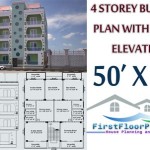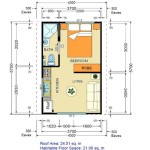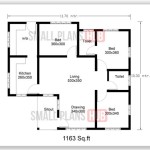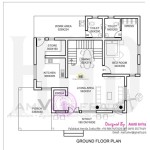Tiny House On Trailer Building Plans: A Comprehensive Guide
The allure of tiny house living continues to grow, driven by desires for financial freedom, minimalist lifestyles, and increased mobility. For many, the most practical approach to realizing this dream is constructing a tiny house on a trailer. This method offers the advantage of portability, allowing relocation as needed, and often simplifies the permitting process compared to building a tiny house on a permanent foundation. However, a successful tiny house on trailer build hinges significantly on having well-defined and accurate building plans.
These plans serve as the blueprint for the entire project, detailing every aspect from the trailer selection and framing to the electrical and plumbing systems. Without clear and comprehensive plans, builders risk costly mistakes, structural instability, and potential safety hazards. This article provides a detailed exploration of the key considerations and elements necessary for creating effective tiny house on trailer building plans.
Trailer Selection and Foundation Integration
The foundation of any tiny house on a trailer is, quite literally, the trailer itself. Selecting the appropriate trailer is paramount, impacting the house's size, weight, and overall design. Consider the intended use of the tiny house. Will it be primarily stationary, or will it be frequently moved? This influences the required load capacity, axle configuration, and braking system of the trailer. Professional trailer manufacturers can provide guidance on selecting a trailer that meets specific weight and size requirements, ensuring it’s appropriately rated for the finished tiny house.
It is critical to determine the desired dimensions of the finished tiny house before trailer selection. Local regulations often dictate maximum width and height restrictions for towed vehicles. Exceeding these limits can lead to legal complications and difficulties when traveling. Common widths for tiny houses on trailers range from 8 to 8.5 feet, while lengths can vary from 16 to 32 feet or more. Carefully consider these limitations when defining the initial design.
The building plans must clearly illustrate how the tiny house will be securely attached to the trailer. Unlike a typical house with a foundation, a tiny house on a trailer is subjected to constant vibrations and stresses during movement. Failing to properly secure the structure can lead to separation between the house and the trailer, a potentially catastrophic event. Common methods of attachment involve welding steel plates to the trailer frame and bolting the house framing to these plates. The plans should specify the type and size of bolts, the welding specifications, and the precise locations of attachment points.
Furthermore, the design should account for weight distribution across the trailer. Uneven weight distribution can affect the trailer's handling and stability, making it difficult and dangerous to tow. Place heavier components, such as appliances and water tanks, strategically to balance the load. The building plans should include a detailed weight calculation, showing the estimated weight of each major component and its location within the house. This helps ensure that the finished tiny house is properly balanced and within the trailer's weight capacity.
Framing and Structural Integrity
The framing of a tiny house on a trailer must be robust enough to withstand both the stresses of travel and the static loads of living. While traditional stick-built framing is common, other options such as steel framing or structural insulated panels (SIPs) may be considered, each offering unique advantages in terms of strength, weight, and insulation value. Regardless of the chosen method, the building plans must provide detailed framing diagrams, specifying the dimensions and spacing of all structural members.
Connections between framing members are particularly crucial in a tiny house on a trailer. Traditional nailing may not be sufficient to withstand the vibrations and stresses of movement. Screws and bolts offer superior holding power and are generally preferred. The plans should specify the type and size of fasteners to be used at each connection point, ensuring that they are appropriate for the intended load. It is also important to use metal connectors, such as hurricane ties and seismic straps, to further strengthen connections and prevent racking.
Proper attention must be given to the design of shear walls, which provide lateral stability to the structure. Shear walls resist the forces of wind and earthquakes, preventing the house from collapsing. The building plans should clearly indicate the location of shear walls, their construction details, and the required fastening schedule. Common materials for shear walls include plywood and oriented strand board (OSB). The thickness and grade of these materials must be specified, along with the spacing of nails or screws.
Door and window openings require special attention in the framing design. These openings weaken the structure, so they must be properly reinforced to maintain structural integrity. The building plans should specify the size and type of headers to be used above door and window openings. Headers are structural members that span the opening, transferring the load to the surrounding framing. The size of the header depends on the width of the opening and the load it must support. The plans should also show how the headers are connected to the surrounding framing, ensuring a strong and secure connection.
Essential Systems: Plumbing, Electrical, and HVAC
Integrating essential systems such as plumbing, electrical, and HVAC into a tiny house on a trailer requires careful planning and execution. Space is limited, and these systems must be designed to be both functional and safe. The building plans must include detailed diagrams showing the layout of each system, including the location of pipes, wires, and equipment.
The plumbing system should be designed to minimize the risk of freezing during cold weather. Pipes should be insulated and located in heated areas whenever possible. The building plans should specify the type of pipe to be used, as well as the location of shut-off valves for maintenance and repairs. Consider the water source – will it be connected to a municipal water supply, or will a water tank be used? The plans should detail the water tank's size and location, as well as the pump and filtration system.
The electrical system must be designed to meet the energy needs of the tiny house while adhering to safety standards. The building plans should include a load calculation, which estimates the total electrical demand of the house. This helps determine the appropriate size of the electrical panel and the capacity of the wiring. All wiring should be installed according to local electrical codes. The plans should specify the type and size of wiring to be used, as well as the location of outlets, switches, and lights. Consider whether the tiny house will be connected to the grid or operate off-grid using solar panels and batteries. The plans should detail the solar panel array size, battery bank capacity, and the location of the inverter and charge controller.
Heating, ventilation, and air conditioning (HVAC) are essential for maintaining a comfortable indoor environment. The choice of HVAC system depends on the climate and the energy efficiency goals of the builder. Common options include propane heaters, electric heaters, mini-split air conditioners, and wood stoves. The building plans should specify the type and size of HVAC equipment to be used, as well as the location of vents and ductwork. Proper ventilation is crucial for preventing moisture buildup and maintaining indoor air quality. The plans should include details on ventilation strategies, such as installing exhaust fans in bathrooms and kitchens.
In conclusion, creating comprehensive tiny house on trailer building plans is essential for a successful and safe construction project. Careful consideration of trailer selection, framing techniques, and essential systems, as well as adherence to local codes and regulations, will help ensure that the finished tiny house is structurally sound, comfortable, and legally compliant. These plans should be viewed as a comprehensive guide, regularly consulted and updated throughout the building process, leading to the realization of the tiny house dream.

Tiny House Floor Plans 32 Home On Wheels Design

Show Model Bungalow Cottage Floor Plans Tiny House Small

27 Adorable Free Tiny House Floor Plans Trailer Small

Free Tumbleweed Diy Tiny House Plans Houses

27 Adorable Free Tiny House Floor Plans Craft Mart

Blueprints For Small Mobile Homes And Travel Trailers Tiny House Blog

224 Sq Ft Tiny House On Wheels By Living Homes Small Diy Floor Plans

Plans Tiny House By Hangan

Tiny House Plans 24 X 8 6 13 Diy Camper Trailer Project With Loft

Free Plans Tiny House Design Diy








